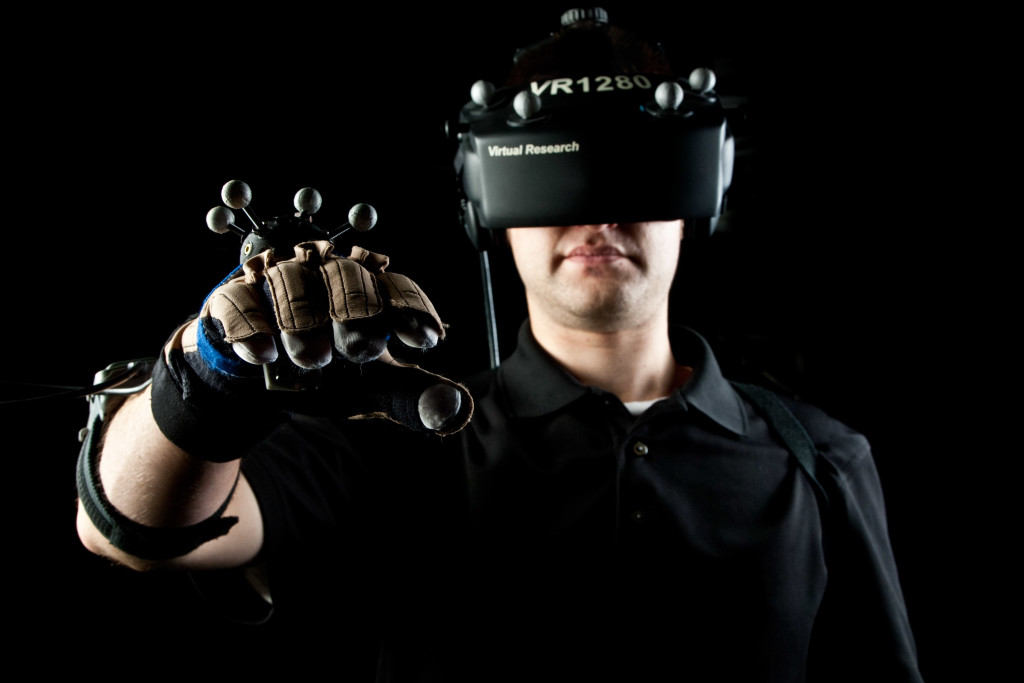We’ve tackled the topic of virtual reality on more than one occasion, like how it’s expected to become a six billion dollar in market in 2016, and how a number of developers and companies are already taking advantage of the format, whether it’s with movie-based promotions or being used through the convenience of a hotel room.
However, this week’s Consumer Electronics Show has taught us a bit more about the market as we’ve come to expect it, whether it’s with key announcements over the release of long-awaited devices, the introduction of new features, or the expansion of compatibility with said virtual reality gear. Here’s a quick wrap-up of what we’ve learned over the past few days regarding VR-related technology.
Compatibility Is On the Rise
Although the current set-up for certain devices like the Oculus Rift require a high-powered PC in order to run properly, virtual reality could soon see even bigger compatibility down the road.
Mobile has already played a big part with the VR market, with Google Cardboard and Samsung VR already showing easy compatibility with a number of smartphones and tablets. As 2016 goes along, though, we’ll see this open up with a number of new applications that take advantage of the format, all through the convenience of devices people already own.
As the Oculus Rift makes its way to market, the team at Oculus could also make adjustments to make it compatible with other devices, including gaming laptops and, considering its partnership with Microsoft, maybe even the Xbox One console or Windows 10-related devices, like the Surface Pro line. That’s not confirmed just yet, but opening the door to more consumers would be better for the Oculus Rift overall.
Moving forward, virtual reality will not just be about immersion, but also ease of use and as the year goes on, we’ll see options open up to make it more acceptable to the market. It’ll take a little time, though.
Everyone Is Getting On Board
A number of developers have already begun working on games and applications for virtual reality-related tech, and by 2016, the field will be wide open in terms of possibilities.
Along with Netflix compatibility (through a living room-based app) and gaming partners signed on with Oculus (like Insomniac Games with its survival-based Edge of Nowhere), Sony also has plenty of games in the works for its PlayStation VR-related tech. Per this report from the BBC, CEO Kaz Hirai confirmed that there are already over 100 titles in development for Sony’s forthcoming device, including entertaining games like Rez Infinite and 100 Foot Robot Golf, as well as third-party sequels like Ace Combat 7.
We are working on over 100 titles that will play on PlayStation VR, he said. This is a testament to the kind of support we are getting from the content creation community. So we have a lot of support and I think it will be great product when it comes out later this year.
That’s a lot of titles to play, indicating there will be something for everyone in the market, from the hardcore fans to casual players looking to relax after a stressful day at work. That could make all the difference in accessibility for virtual reality on the market.
Immersion, But Not Too Much
While the immersion of virtual reality is promising, there are some companies that feel that convenience should be a part of its design.
That’s exactly what HTC did this week with an upgraded version of the Vive. The new design not only promises to be affordable to the market when it releases in April, but also convenient, as the new design features a front-facing camera, so a viewer can check on something in the real world should the situation call for it. This could help avoid collisions or accidents.
Comfort is also a big focus on some of these designs. The Vive promises to have interchangeable foam inserts and “nose gaskets” to make the wearing of the headset more convenient. The Oculus and PlayStation VR will have similar designs as well, so they don’t create headaches for those that are wearing them.
It’s Here But Are Consumers Ready To Adopt
2016 marks the year that virtual reality will finally be ready for the consumer market. Oculus has already made the big move with CES this week, announcing that the consumer version of its headset will initially ship in March for $599. While some customers have balked at the high price point, it’s been a best-seller in the pre-order front, with shipments delaying as far as June based on high demand.
The HTC Vive won’t be far behind, set to ship in April for an unspecified price point, while the PlayStation VR will follow sometime in 2016, with full details expected to be announced at Sony’s pre-E3 press conference in June and perhaps even sooner, based on demand.
It appears virtual reality is finally ready to happen, with the “big guns” coming out and promising a new experience that will certainly be worth the wait. Now it’s just a matter of seeing what developers do with the tech, and how much consumers are willing to accept it.

